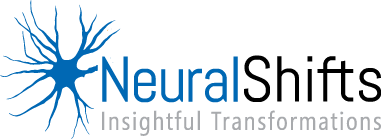Building Mental Agility and Emotional Strength in Times of Uncertainty
In today’s fast-paced, ever-changing business landscape, many employees find themselves overwhelmed by shifting priorities and constant disruptions. The stress isn’t just about workload—it’s the emotional toll of relentless change that leaves teams feeling unsteady and disconnected. As a leader, your challenge is clear: how do you help your team build resilience, process adversity, and stay engaged despite the chaos?
The Challenge: Leading Through Constant Change
In my work with a rapidly growing tech company, leaders were facing increasing demands while their teams were struggling to keep up. The constant shifts in priorities were not only impacting performance but also undermining employee well-being. It became clear that simply managing workloads wasn’t enough, the team needed to build resilience to thrive in an environment where change was the only constant.
Implementing Resilient Spaces
The solution? Resilient spaces –structured, safe environments where employees could process stress, build mental agility, and regain emotional control. I designed a series of resilience sessions that included mindfulness practices, stress management techniques, and open forums for candid conversations. These sessions weren’t about more work; they were about giving employees the mental space to reflect, regroup, and reset.
Rather than simply focusing on productivity, these sessions encouraged employees to reframe their approach to change. By learning how to manage their stress effectively, they could re-enter the work environment with greater emotional clarity and a sense of control over their responses.
Developing Conflict Resolution Skills and Flexibility
Additionally, we addressed conflict by providing employees with a brain-based conflict resolution framework. In an environment of constant change, tensions are bound to rise, but it’s essential to manage conflict constructively. We focused on communication techniques that allowed teams to address differences without escalating stress levels, fostering a healthier work dynamic.
Perhaps most importantly, we focused on mindset flexibility. Change, while inevitable, is an opportunity for growth—those who can adapt, innovate, and embrace new challenges will thrive. Through tailored exercises, employees learned to approach obstacles with resilience and creativity, rather than fear or frustration.
The Results: A Stronger, More Resilient Workforce
The impact was immediate and powerful. Employees reported feeling more grounded, with a renewed sense of purpose and control. The leadership team noticed improvements in collaboration, morale, and overall engagement. As employees gained the tools to manage stress and conflict, they developed a stronger, more adaptable approach to their work.
Leaders also saw a marked shift: their teams were no longer bogged down by constant change but were driving forward with greater energy and commitment. The resilience sessions didn’t just help employees whether the storm—they empowered them to excel amid it.
Key Takeaways
- Create structured resilience sessions that offer employees the tools to manage stress, process change, and reset their mindset.
- Equip employees with conflict resolution skills to address interpersonal challenges and maintain productivity.
- Foster adaptability by encouraging a flexible mindset that allows employees to view change as an opportunity for growth.
- Support emotional transparency through safe spaces where employees can openly share challenges and receive support.
In today’s business environment, organizations that prioritize building resilience in their teams don’t just survive, they thrive. By creating resilient spaces, you ensure that your employees not only have the ability to endure change but to harness it for success.


0 Comments